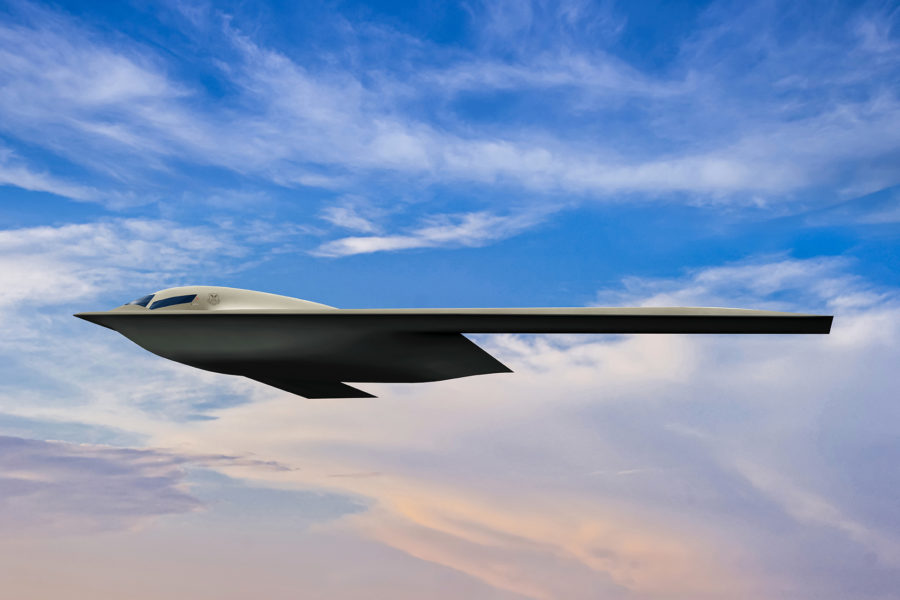Without explanation, the Air Force now says the first B-21 bomber will not make its first flight until 2023, pushing back at least six months from the previously expected timetable.
“Recently, the Air Force released a new estimate for first flight; projected for next year, 2023,” a service spokeswoman said May 20. The service said it’s trying to be as “transparent” as it can be about the project, and “this estimate reflects the current status of the program.” She did not attribute the delay to any particular cause. Many other high-profile programs, such as Boeing’s T-7A trainer, have recently reported delays due to supply chain issues and labor shortages.
The B-21 “remains within its acquisition program baseline for cost, schedule, and performance established at Milestone B award, which was based on an independent government estimate for the program,” the spokeswoman said.
Rapid Capabilities Office director Randall Walden predicted in early 2021 that the B-21 would fly in “mid-2022,” and in March said that the first flyable example was largely assembled and undergoing outdoor calibration tests. These, he said, would be followed by taxi tests and first flight, but he did not give a timetable.
Air Force and industry sources say the service likely will still roll out the first B-21 in calendar 2022, because the aircraft will have to venture outside Northrop Grumman’s Palmdale, Calif., plant for engine and other testing.
“The B-21 program continues to ensure the first flight test aircraft is a high-quality build and production-representative, in order to drive an efficient flight test campaign and rapidly field this critical combat capability,” the spokeswoman said. The first flight will be “data- and event-driven, not a date-driven event,” meaning the aircraft will fly only when the Air Force believes it’s ready to do so.
While trying to be transparent with Congress and the public on the B-21, USAF said it is “protecting sensitive program information from adversary exploitation” and is constrained in the details it can provide.
Walden said in March that the program had not been significantly affected by supply chain issues, raising the possibility that an anomaly has been discovered in test.
Members of the Senate and House Armed Services Committees have recently praised the B-21 as well-run and a model acquisition; Sen. Tom Cotton (R-Ark.) said recently it has been an “exquisitely run program.”
Lt. Gen. David S. Nahom told the House Armed Services Committee May 19 the service is eyeing as many as 145 B-21s, but a full acquisition strategy has not yet been determined; it awaits the completion of engineering and manufacturing development.
The Air Force plans to spend nearly $20 billion on producing the B-21 during the future years defense plan running from fiscal 2023 through fiscal 2027, and another $12 billion on research and development for the program during that same period, for a total of $32 billion over the FYDP. The B-21 will succeed the B-1B and B-2 bombers now in service, but the exact dates of those turnovers has been walked back in recent years. Three years ago, the plan was for the B-2 and B-1 to retire in 2031 and 2032, respectively. But Nahom told the HASC those dates depend on progress with the B-21, and pledged they will not retire until they “shake hands” with the B-21s that replace them.
Since contract award, the Air Force has said the B-21 will be a “available” for combat use in the “mid-2020s.”
